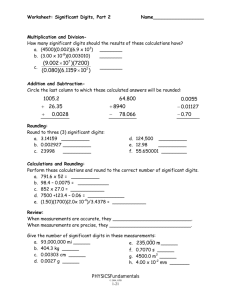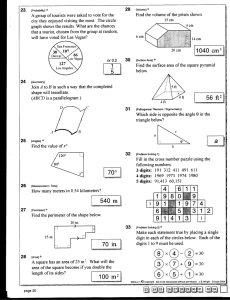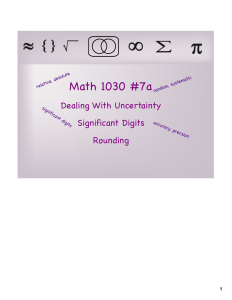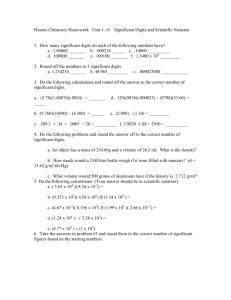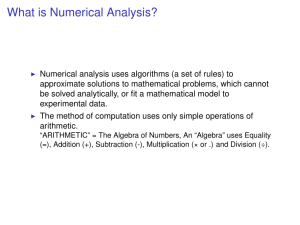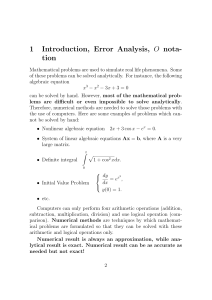Introduction to Numerical Analysis I Handout 3 1 The Error
advertisement
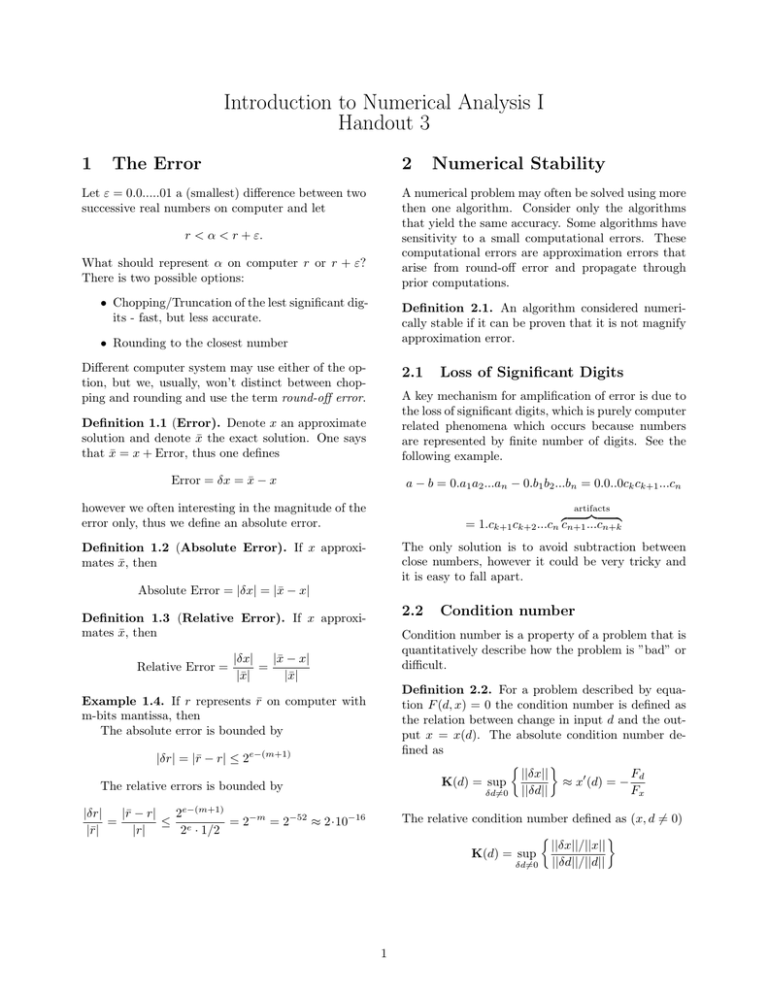
Introduction to Numerical Analysis I
Handout 3
1
The Error
2
Let ε = 0.0.....01 a (smallest) difference between two
successive real numbers on computer and let
Numerical Stability
A numerical problem may often be solved using more
then one algorithm. Consider only the algorithms
that yield the same accuracy. Some algorithms have
sensitivity to a small computational errors. These
computational errors are approximation errors that
arise from round-off error and propagate through
prior computations.
r < α < r + ε.
What should represent α on computer r or r + ε?
There is two possible options:
• Chopping/Truncation of the lest significant digits - fast, but less accurate.
Definition 2.1. An algorithm considered numerically stable if it can be proven that it is not magnify
approximation error.
• Rounding to the closest number
Different computer system may use either of the option, but we, usually, won’t distinct between chopping and rounding and use the term round-off error.
2.1
Loss of Significant Digits
Definition 1.1 (Error). Denote x an approximate
solution and denote x̄ the exact solution. One says
that x̄ = x + Error, thus one defines
A key mechanism for amplification of error is due to
the loss of significant digits, which is purely computer
related phenomena which occurs because numbers
are represented by finite number of digits. See the
following example.
Error = δx = x̄ − x
a − b = 0.a1 a2 ...an − 0.b1 b2 ...bn = 0.0..0ck ck+1 ...cn
however we often interesting in the magnitude of the
error only, thus we define an absolute error.
}|
{
z
= 1.ck+1 ck+2 ...cn cn+1 ...cn+k
artifacts
The only solution is to avoid subtraction between
close numbers, however it could be very tricky and
it is easy to fall apart.
Definition 1.2 (Absolute Error). If x approximates x̄, then
Absolute Error = |δx| = |x̄ − x|
2.2
Definition 1.3 (Relative Error). If x approximates x̄, then
Relative Error =
Condition number
Condition number is a property of a problem that is
quantitatively describe how the problem is ”bad” or
difficult.
|δx|
|x̄ − x|
=
|x̄|
|x̄|
Definition 2.2. For a problem described by equation F (d, x) = 0 the condition number is defined as
the relation between change in input d and the output x = x(d). The absolute condition number defined as
||δx||
Fd
K(d) = sup
≈ x0 (d) = −
||δd||
Fx
δd6=0
Example 1.4. If r represents r̄ on computer with
m-bits mantissa, then
The absolute error is bounded by
|δr| = |r̄ − r| ≤ 2e−(m+1)
The relative errors is bounded by
|δr|
|r̄ − r|
2e−(m+1)
=
≤ e
= 2−m = 2−52 ≈ 2·10−16
|r̄|
|r|
2 · 1/2
The relative condition number defined as (x, d 6= 0)
||δx||/||x||
K(d) = sup
||δd||/||d||
δd6=0
1
